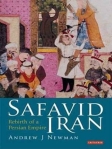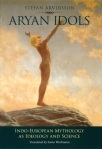Posted on 23/01/2011 by GünTürk
 This book is not simply about the deportation and return of the Crimean Tatars but rather about the intellectual and cultural development of the Crimean Tatar people before, during and after deportation. In this respect it places the Tatar people more in a general study of the development of Islamic thinking and reform in the late 19th Century rather than just simply a book about one of many ethnic groups who where the subject of Stalin’s cultural and ethnic genocide. Okumaya devam et →
This book is not simply about the deportation and return of the Crimean Tatars but rather about the intellectual and cultural development of the Crimean Tatar people before, during and after deportation. In this respect it places the Tatar people more in a general study of the development of Islamic thinking and reform in the late 19th Century rather than just simply a book about one of many ethnic groups who where the subject of Stalin’s cultural and ethnic genocide. Okumaya devam et →
Filed under: English, History, Politic, Turkic World | Leave a comment »
Posted on 02/01/2011 by GünTürk
 The Safavid dynasty, which reigned from the late fifteenth to the eighteenth century, linksmedieval with modern Iran. The Safavids witnessed wide-ranging developments inpolitics, warfare, science, philosophy, religion, art and architecture. But how did this dynasty manage to produce the longest lasting and most glorious of Iran’s Islamic-period eras?
The Safavid dynasty, which reigned from the late fifteenth to the eighteenth century, linksmedieval with modern Iran. The Safavids witnessed wide-ranging developments inpolitics, warfare, science, philosophy, religion, art and architecture. But how did this dynasty manage to produce the longest lasting and most glorious of Iran’s Islamic-period eras?
Andrew Newman offers a complete re-evaluation of the Safavid place in history as they presided over these extraordinary developments Okumaya devam et →
Filed under: English, History, Politic, Turkic World | Leave a comment »
Posted on 27/12/2010 by GünTürk
 The central argument of this book is that the half-century of Russian rule in Central Asia was shaped by traditions of authoritarian rule, by Russian national interests, and by a civic reform agenda that brought to Turkestan the principles that informed Alexander II’s reform policies. This civilizing mission sought to lay the foundations for a rejuvenated, ‘modern’ empire, unified by imperial citizenship, patriotism, and a shared secular culture. Evidence for Brower’s thesis is drawn from major archives in Uzbekistan Okumaya devam et →
The central argument of this book is that the half-century of Russian rule in Central Asia was shaped by traditions of authoritarian rule, by Russian national interests, and by a civic reform agenda that brought to Turkestan the principles that informed Alexander II’s reform policies. This civilizing mission sought to lay the foundations for a rejuvenated, ‘modern’ empire, unified by imperial citizenship, patriotism, and a shared secular culture. Evidence for Brower’s thesis is drawn from major archives in Uzbekistan Okumaya devam et →
Filed under: English, History, Politic, Turkistan | Leave a comment »
Posted on 04/11/2010 by GünTürk
 Stefan Arvidsson is assistant professor at the University of Halmstad and a researcher at the University of Lund. Sonia Wichmann received a Ph.D. from the Department of Scandinavian at the University of California, Berkeley.
Stefan Arvidsson is assistant professor at the University of Halmstad and a researcher at the University of Lund. Sonia Wichmann received a Ph.D. from the Department of Scandinavian at the University of California, Berkeley.
Critically examining the discourse of Indo-European scholarship over the past two hundred years, Aryan Idols demonstrates how the interconnected concepts of “Indo-European” and “Aryan” as ethnic categories have been shaped by, and used for, various ideologies. Okumaya devam et →
Filed under: Aryan Lie, English, History, Idea, Politic | Leave a comment »
 This book is not simply about the deportation and return of the Crimean Tatars but rather about the intellectual and cultural development of the Crimean Tatar people before, during and after deportation. In this respect it places the Tatar people more in a general study of the development of Islamic thinking and reform in the late 19th Century rather than just simply a book about one of many ethnic groups who where the subject of Stalin’s cultural and ethnic genocide. Okumaya devam et
This book is not simply about the deportation and return of the Crimean Tatars but rather about the intellectual and cultural development of the Crimean Tatar people before, during and after deportation. In this respect it places the Tatar people more in a general study of the development of Islamic thinking and reform in the late 19th Century rather than just simply a book about one of many ethnic groups who where the subject of Stalin’s cultural and ethnic genocide. Okumaya devam et 


 The Safavid dynasty, which reigned from the late fifteenth to the eighteenth century, linksmedieval with modern Iran. The Safavids witnessed wide-ranging developments inpolitics, warfare, science, philosophy, religion, art and architecture. But how did this dynasty manage to produce the longest lasting and most glorious of Iran’s Islamic-period eras?
The Safavid dynasty, which reigned from the late fifteenth to the eighteenth century, linksmedieval with modern Iran. The Safavids witnessed wide-ranging developments inpolitics, warfare, science, philosophy, religion, art and architecture. But how did this dynasty manage to produce the longest lasting and most glorious of Iran’s Islamic-period eras?
 Stefan Arvidsson is assistant professor at the University of Halmstad and a researcher at the University of Lund. Sonia Wichmann received a Ph.D. from the Department of Scandinavian at the University of California, Berkeley.
Stefan Arvidsson is assistant professor at the University of Halmstad and a researcher at the University of Lund. Sonia Wichmann received a Ph.D. from the Department of Scandinavian at the University of California, Berkeley.